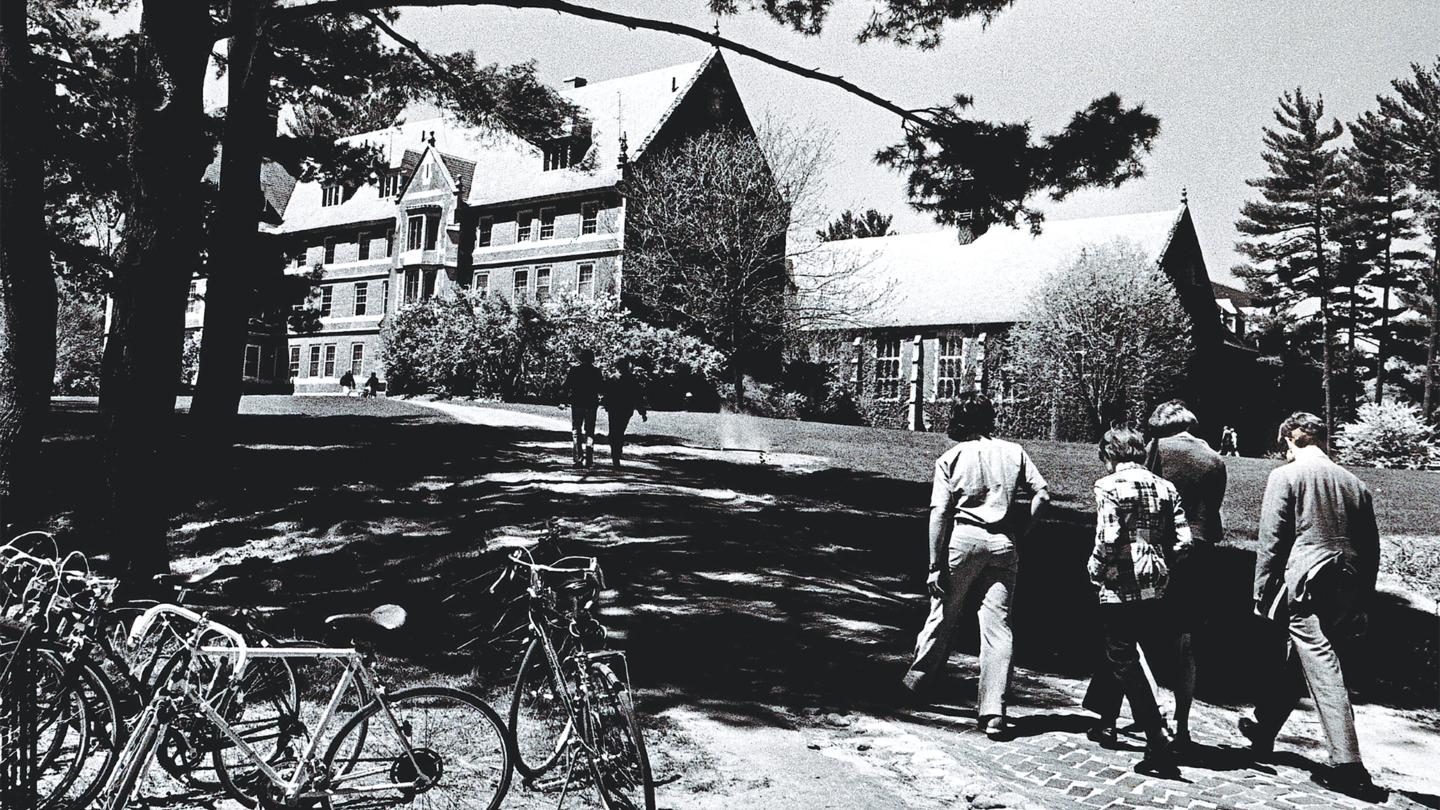

The heritage buildings, grounds and waterways that are part of the history of St. Paul’s School are also essential to its future.
On a crisp January day in 1859, the original Chapel of St. Paul was consecrated.
The first significant building project for the three-year-old school, it was also “an act of faith,” mused August Heckscher II ’32 in his book, “St. Paul’s: The Life of a New England School”; “visible affirmation that the little school intended to endure and to grow.” And grow it did.
During his 25th anniversary sermon in 1881, First Rector Dr. Henry Augustus Coit reflected on the School’s future, asking, “Will the work still live? Will the flame of this sanctuary still be kept up?” The Rector’s questions encompassed the entirety of the scholastic and spiritual endeavor begun by founder George Shattuck, and Dr. Coit followed up with a profound answer a year later when he tasked a committee of alumni to raise funds for a new chapel, the School having already outgrown the first. Six years later, Coit sat in the new Chapel of St. Peter and St. Paul, surrounded for its dedication by “a crowd of alumni … the most numerous that had ever returned to the school at one time,” according to Heckscher, including many who had helped fund its construction — new stewards of the First Rector’s “flame.”
Forty years later, Fourth Rector Dr. Samuel Smith Drury asked the SPS community to build upon that flame by raising funds to undertake another extraordinary mission: expanding New Chapel by cutting it at the cross to accommodate a growing student body. In 1929, when construction was completed — the altar moved eastward, two bays added, the body rejoined brick by brick — the Chapel’s place as the School’s spiritual center was assured for future generations.
And thus it remains in 2024. The size of the SPS student body reached equilibrium some years ago, yet the “New” and “Old” Chapels, and the buildings that grew up alongside them during the School’s first century — as well as the very grounds on which those buildings sit — require considerable care and conservation in their second century, including substantial reinvestment in outmoded systems and technologies, proactive adaptation to current and predicted impacts of climate change, and strategic anticipation of the evolving programmatic needs of students and faculty.
“Like many great, aging institutions whose physical plants are inextricably intertwined with history, identity and experience, we are beginning to understand the needs of our beautiful, antique home,” Fourteenth Rector Kathy Giles says. “We are already experiencing changes in the landscape as warmer temperatures affect the way water works on the grounds — and we have a lot of water. Many of our most beautiful heritage facilities — the Old Chapel, the New Chapel, Sheldon Library, Coit — are made of wood and bricks that will require substantial conservation and revitalization, in addition to their years of maintenance.”
From the specialized care needed to preserve ornate woodwork and masonry to strategies for improving energy efficiency in older buildings to reduce energy consumption and create pathways toward decarbonization, the work ahead is no less significant than that which was undertaken during the School’s earliest years.
“When one looks around at St. Paul’s School, the power of place and the energy of youth combine to remind us, every day, that the best work we can do here is to educate young people to build lives of purpose, ultimately in service to the welfare of the world,” Giles adds. “The spaces from which we draw inspiration, seek spiritual renewal, and form lifelong connections must continue to best serve our students and maintain the spirit of place so meaningful to generations of alumni.”
The School’s heritage buildings — Old Chapel, New Chapel, Coit, Sheldon and Schoolhouse — and the grounds and waterways intertwined with SPS history also are key to its future. Careful, sustained care of these family heirlooms is an important stewardship responsibility for the current generation of St. Paul’s people, and the ones who are still to come.
How can you help with this important work?
Whether you graduated five years ago or 50, we know St. Paul’s School is one of your homes in the world, its beautiful buildings and expansive grounds bound to your memories of one of the most formative times in your life.
Unrestricted gifts made to the SPS Heritage Fund, a philanthropic designation of The SPS Fund, are reinvestments in Millville’s beauty and grace and directly fund the ongoing care of the buildings and grounds that defined your SPS experience. Please consider making a gift today to join a centuries-old tradition of stewarding the historic facilities and beautiful grounds of St. Paul’s School for generations to come.
